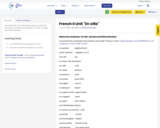
This interactive and collaborative group activity lets the students master the vocabulary “En ville” and give and follow directions.
- Subject:
- French
- World Languages
- Material Type:
- Game
- Interactive
- Lesson
- Lesson Plan
- Date Added:
- 12/22/2019

This interactive and collaborative group activity lets the students master the vocabulary “En ville” and give and follow directions.

After experiencing this module, students should understand that friction is a force that opposes motion (SOL 5.3e). This lesson was written with an inclusive fifth grade classroom in mind, but can be adapted for a smaller pull-out group if necessary. This module was developed by Karin Kaerweras part of a Virginia Commonwealth University STEM initiative sponsered by the Virginia Department of Education.

Science Instructional Plans (SIPs) help teachers align instruction with the Science Standards of Learning (SOL) by providing examples of how the content and the scientific and engineering practices found in the SOL and curriculum framework can be presented to students in the classroom.

In this lesson, students will experience the force of friction as they use block-based coding to program a Sphero Bot through a maze made up of materials with varying amounts of friction.

Students will examine the bust, "Portrait of Nadine Dumas", and create a portrait bust of a friend to give to the friend as a gift. Students will then discuss the modeling techniques used to communicate likeness and expression in a three-dimensional bust portrait.

Teachers will implement matching letter sounds to letters. The teacher will have picture cards for each letter sound in a stack in a basket. Students will get a random card, identify the picture and corresponding letter sound, and then hop like a frog to return the picture card to its letter.
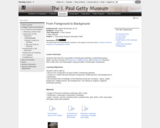
Students will study the composition of landscape paintings, emphasizing space, depth, and the concepts of foreground, middle ground, and background. Students then create their own landscapes using principles of landscape composition.
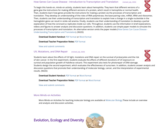
In this hands-on activity students learn how a gene provides the instructions for making a protein, and how genes can cause albinism or sickle cell anemia. Simple paper models are used to simulate the molecular processes of transcription and translation. This activity can be used to introduce students to these topics or to reinforce student understanding. In addition, students evaluate the advantages and disadvantages of different types of models included in this activity.

Rocks can be classified based on their formation. This formation process takes time but is a circular process that allows rocks to interchange forms between metamorphic, igneous, and sedimentary rocks. This lesson will allow students to “create codes” that allow a rock to experience the proper changes to change forms.

Estimating and measuring weight/mass in U.S. Customary units Mathematics Instructional Plans (MIPs) help teachers align instruction with the Mathematics Standards of Learning (SOL) by providing examples of how the knowledge, skills and processes found in the SOL and curriculum framework can be presented to students in the classroom.
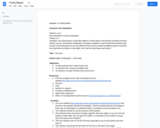
Objectives:
- To help students learn which food is fruit.
- To introduce the concept of healthy food.
- To introduce concept of where food comes from.
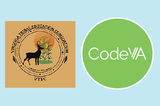
Making and eating fry bread is a special event for many Native American people. People began to make fry bread because sometimes in the past they only had a few things to make meals with. This lesson leads students through the history and heritage of fry bread with the book Fry Bread– A Native American Family Story by Kevin Noble and consider the similies and metaphors within the story, and then reflect on family traditions in their own culture and household through a flowchart of pseudocode. This lesson was created through a partnership between CodeVA and the Virginia Tribal Education Consortium (VTEC).
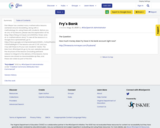
Dan Meyer has created many mathematics lessons centered around storytelling, along with a methodology for using these with students. Before you do any of his lessons, please see the explanation at his blog: https://blog.mrmeyer.com/2011/the-three-acts-of-a-mathematical-story/ To see all the lessons in a Google Docs spreadsheet, go to https://docs.google.com/spreadsheets/d/1jXSt_CoDzyDFeJimZxnhgwOVsWkTQEsfqouLWNN
C6Z4/edit#gid=0
The lessons are all CC BY, and you may edit these to fit your own students’ needs. The links from #GoOpenVA go to his own website because the structure of the lessons (including pertinent videos) is integral to the delivery of the lessons. Some lessons are stored as downloadable zip files, and these are noted as part of the link.

Reflecting, Dilating and Translating FunctionsMathematics Instructional Plans (MIPs) help teachers align instruction with the Mathematics Standards of Learning (SOL) by providing examples of how the knowledge, skills and processes found in the SOL and curriculum framework can be presented to students in the classroom.

During this lesson, students will make connections between Computer Science, as it rEnglishtes to real-world situations and texts. They will collaborate with other students to share ideas and create their own sequenced algorithm, based on finding relevant information through research. Students will organize the information and write in their own words using transition words. Once finished creating their research product, they will effectively communicate their final product with others. As reflection on their acquisition of computer science vocabulary taught, students may complete a peer questionnaire.

Investigating relations and functionsMathematics Instructional Plans (MIPs) help teachers align instruction with the Mathematics Standards of Learning (SOL) by providing examples of how the knowledge, skills and processes found in the SOL and curriculum framework can be presented to students in the classroom.

Investigating domain, range, intercepts, and zerosMathematics Instructional Plans (MIPs) help teachers align instruction with the 2016 Mathematics Standards of Learning (SOL) by providing examples of how the knowledge, skills and processes found in the SOL and curriculum framework can be presented to students in the classroom.

Finding domain and range, continuity, and end behavior for a given function Mathematics Instructional Plans (MIPs) help teachers align instruction with the Mathematics Standards of Learning (SOL) by providing examples of how the knowledge, skills and processes found in the SOL and curriculum framework can be presented to students in the classroom.

Finding extrema and intervals increasing and decreasing for a function Mathematics Instructional Plans (MIPs) help teachers align instruction with the Mathematics Standards of Learning (SOL) by providing examples of how the knowledge, skills and processes found in the SOL and curriculum framework can be presented to students in the classroom.
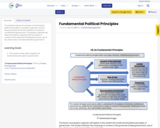
The students will see an overview of fundamental political principles in a graphic organizer and how these principles are the foundations of American constitutional government. The graphic organizer will help the students understand the principles of consent of the governed, limited government, rule of law, democracy, and representative government.